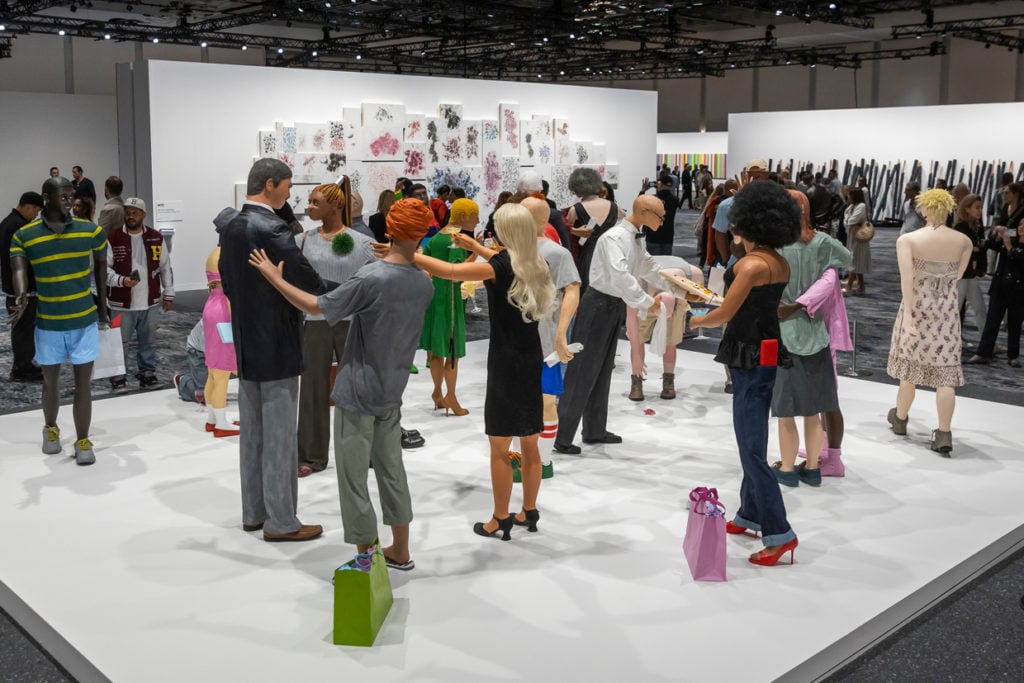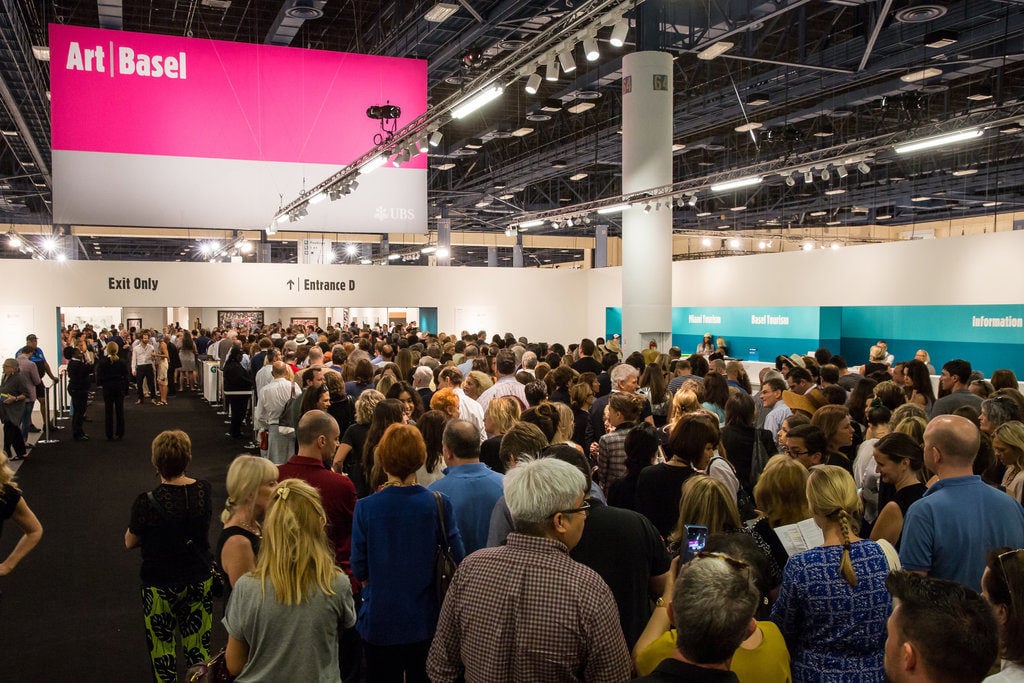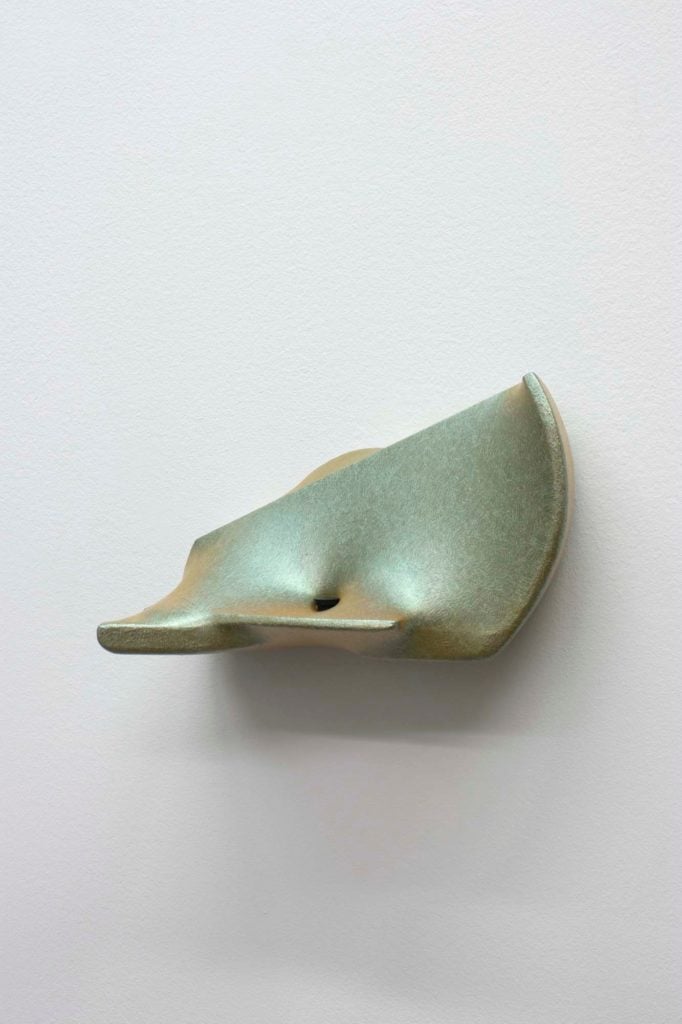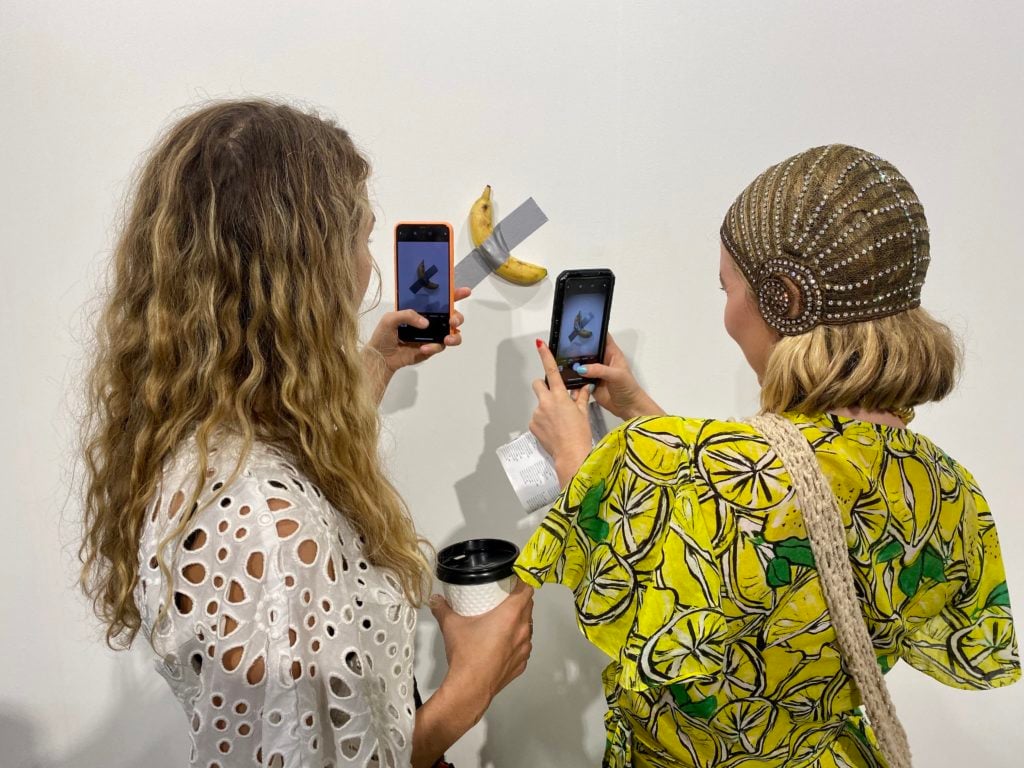Opinion
The Gray Market: 3 Takeaways From the 2019 Edition of Art Basel Miami Beach (and Other Insights)
Our columnist wraps up this year's Miami Art Week extravaganza, from sales, to parties, to, yes, because it's the law, that banana.

Our columnist wraps up this year's Miami Art Week extravaganza, from sales, to parties, to, yes, because it's the law, that banana.

Tim Schneider

Every Monday morning, artnet News brings you The Gray Market. The column decodes important stories from the previous week—and offers unparalleled insight into the inner workings of the art industry in the process.
This week, breaking with our usual format to cap off the year in art fairs…
Well, folks, we’ve reached that milestone again: Miami Art Week—AKA the seven-day blitz of trade fairs, pop-ups, brand activations, museum openings, parties, dinners, and generally questionable life decisions surrounding Art Basel Miami Beach—is officially over. And before I have to shift into predictions mode again, let’s bullet-point a few takeaways from the industry’s latest pilgrimage to south Florida.
In the days leading up to my flight to Miami Tuesday morning, I saw a lot of chatter online about how this was going to be the year that Art Basel Miami Beach and its many satellites finally jumped the shark—or got mauled by one.
The European buyers weren’t going to show up. The parties had gotten so out-of-control that they were smothering business. The somewhat ground-bound fall auctions reflected that buyers were uncertain about an American and global economy queasy with political volatility. There was even a chance that anyone who came could contract dengue fever, for Pete’s sake!
Some of those things may have been true (as we’ll get to in a minute). But it didn’t matter. Sure, some dealers pounding their chests about big sales were just full of smoke. But there were too many data points to ignore: the trade was strong enough across the board that there isn’t really any way to write about it without sounding like a press release.
As I’m sure you’ve read or heard already elsewhere, from ABMB to NADA, the fairs were active from the jump. A collector I talked to midweek—one who, as far as I can tell, had no incentive to snow me—was disappointed that everything he saw at the opening of Untitled on Tuesday was sold out when he came back the next day. There were some well publicized multimillion-dollar sales at the top of the market, a feeding frenzy around young painters at the main fair, and even a good amount of business being done south of $10,000 over on the mainland.
Did business regularly get to “spectacular” territory? No. But “steady” is a good problem to have.
Bottom line: As one veteran dealer told me with a chuckle at ABMB on Friday when I mentioned the pre-fair talk of impending doom, “They’ve been saying that for 10 years.” In other words, go ahead and book your hotel for next year, kids. Miami Art Week is here to stay.
That said…

The lines to get into Art Basel in Miami. Courtesy of Art Basel.
The Miami Art Week cynics weren’t completely off base about their predictions on an individual level. Dealers I talked to at the main fair did note that at least some major European collectors had opted out of the trek to Miami this year. Advisors including Lisa Schiff were also open with my colleagues about being the boots on the ground for European and American clients alike (although some of them were still transacting remotely).
Another well-placed gallery source told me that the dealer-to-dealer gossip on ABMB’s opening days was uncharacteristically mild. Perhaps that was an indication that this December’s scrum was missing a few key players on the buy side willing to make splashy moves—and maybe even play a little dirty to box one another out—for prized works.
By no means am I saying these signals mean nothing. I just also think that it’s important to ask the follow-up question: Is the participant pool for Miami burning out… or just turning over? And there was at least some evidence that the answer was the latter.
A curator at a renowned US institution told me they were in town strictly to escort new board members getting their ABMB baptism this year. North American, Latin American, and Asian buyers all seemed to be out in force—and skewing younger. A prominent dealer at the main fair relayed that, after a longtime client gave a heads-up that they’d be bringing by a group of 40-something hedge-funders still in the early stages of their collecting lives, they’d tapped a trusted gallery director in their late 30s to be the point person because the two groups would speak the same language—and could build a relationship that might benefit the business for decades after its namesake retired.

Zach Meisner, Untitled, 2019. Courtesy of New Art Dealers Alliance.
Nor were signs of significant churn restricted to the buy side. The 2019 edition of NADA Miami welcomed 28 first-time exhibitors, meaning over 20 percent of the sales floor shifted from last year. Some of that fresh water undoubtedly had the opportunity to flow into the Ice Palace because a set of 2018’s galleries, or at least their fair budgets, evaporated in the intervening 12 months. But other vacancies resulted from alumni galleries, such as Karma, leveling up to ABMB and other pricier fairs for the first time—not least because Art Basel doled out booth discounts to new initiates that brought their costs in line with those at the nearby Miami edition of Untitled.
Ultimately, then, whether it was because of their own age, the travails of cross-continental travel, or distaste for the beach’s bacchanalia, the disappearance of a few tony European collectors from Miami Art Week begs the question: Who cares, as long as the opt-outs are replaced by opt-ins from elsewhere?
After all, isn’t recalibrating the proportion of regional buyers and sellers kinda the whole point of Art Basel running an East Asian fair, a European fair, and a North American fair every year? Wouldn’t fretting about a reduced number of gray-haired Europeans coming to ABMB be a little like worrying that Martin Scorsese thinks Marvel movies are soulless, assembly-line dreck? Of course they’re not interested; it’s not really designed for them!
It’ll be a few years before we know for sure whether there really is a full blood transfusion happening in Miami Beach, as well as whether the new buyers will spend as much as the old ones after they’ve taken over the system. But until we know for sure, it’s too early to say this year’s absentees were a troubling loss for either the fair or the larger market. If we’re going to see genuine growth in either one, not every event should be for everybody anyway.
Granted, some industry insiders will disagree with this assessment. But a longtime resident told me on Sunday morning that he and his fellow Miamians actually think that the ABMB party scene is one of the tamest the city sees on its annual out-of-towner-driven calendar of events… and I can’t say I’m surprised. I mean, let’s be real, it’s mostly a bunch of dudes in blazers drinking wine in hotel venues. If you want to bet me our industry is in the same league of the debauchery derby as Ultra’s subwoofers-and-glow-sticks crowd, or Rolling Loud in an era where hip hop is defined by artists sing-rapping about mega-luxury nihilism, the bank is open, my dudes.

Fairgoers take pictures of Maurizio Cattelan’s Comedian, for sale from Perrotin at Art Basel Miami Beach. Photo by Sarah Cascone.
Look, I don’t especially want to talk about Maurizio Cattelan’s Comedian, the editioned banana that was duct-taped to a wall in dealer Emmanuel Perrotin’s booth, sold for $120,000 (three times over), and subsequently eaten by an unaffiliated performance artist on Saturday. But doing a takeaways column about ABMB 2019 without mentioning it would be like writing a takeaways column about Fyre Festival and not mentioning that the ticket-buyers promised a swanky music festival got nothing but the experience of being stranded on an island in leaky tents by a guy whose previous big idea was a metal credit card. It’s the thing that everyone is going to remember the event for, so let’s just get it over with.
Was the work willfully dumb? Yes. Does its sale justifiably reinforce every negative stereotype about contemporary art? Yes. Could the hundreds of thousands of dollars spent on its various editions have been put toward far more valiant causes? Obviously. Are all of your relatives going to ask you about it during the winter holidays? You better believe it.
Here’s the thing, though: seeing multiple collectors (and possibly an institution or two) blow six figures on a piece of stunt artwork will probably inspire as much, or more, confidence in other buyers going into the new year than the glowing US jobs report released Friday. Like a sports car with a stupid-looking fin on the back, it’s not the kind of acquisition people make in a genuinely uncertain time—or at least, that’s what other people see. And in a trade based on myth-making and subjective evaluations, perception is reality.
“Wait,” you might say, “weren’t a bunch of other higher-priced works sold at Art Basel Miami Beach this week?” Yes, but none of them make the type of zeitgeist-puncturing statement this one does. Even if you think that statement is, “Several morons are ready to spend far too much money based on a decent sales pitch,” I mean, what better opportunity could an art dealer ask for?
I’m exaggerating a little. Of course most dealers would rather the business be sustained by thoughtful collectors carefully selecting works with lasting aesthetic merit. I would too.
But if I learned nothing else from my time in the gallery sector, it’s that noble ideals unite from all sides of an art sale far less often than they need to in order for galleries and artists to make rent every month. No matter how appalled, amused, or unaffected you might be by the sale of Comedian, it’s going to pressure other rich people’s wallets to open a little faster for art—and for everything else—in the weeks ahead, and that’s no joke for anyone.
That’s all for this week. ‘Til next time, remember: If logical arguments mattered more than well-crafted narratives, it isn’t just the art market that would be a lot different.